How to Fish Emergers and Cripple Flies
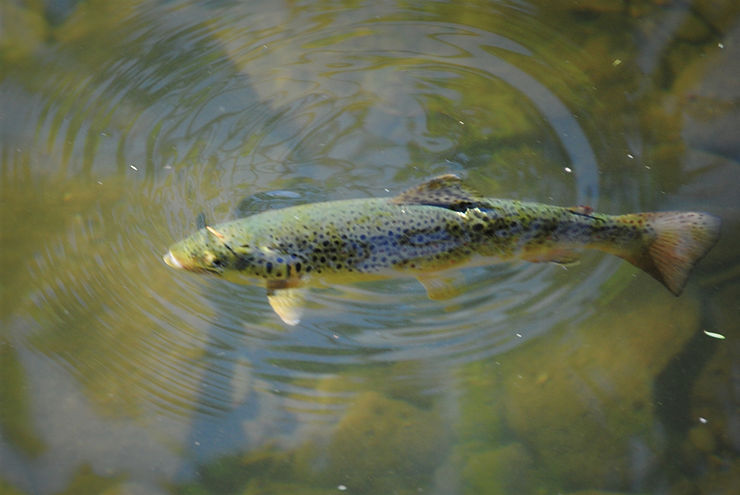
Emergers and cripple flies are terms used to describe several types of fly patterns that aren’t meant to ride hide on the water’s surface like traditional, catskill-style dry fly patterns. Rather, they float along in the film where they appear helpless, making them an easy target for feeding trout.
During every fly hatch, a percentage of insects don’t survive to complete the metamorphosis from nymph to adult, and for a variety of reasons. Maybe as they were emerging, they were wounded by feeding trout. Maybe they weren’t strong enough to break free of their nymphal shuck. Maybe they were naturally slight and too weak to break through the water’s surface film tension. Whatever the reason, these insects never reach adult status but instead get stuck in the film.
Surface film tension plays an important role in how successfully flies hatch. Imagine a thin layer of plastic wrap resting on the surface of your favorite stream. When air temperature warms, that layer gets thinner. When it cools, that layer gets thicker. The thicker the layer, the harder it is for hatching insects to break through, and thus they become trapped in the film, or if you prefer, the plastic wrap.
If you’ve witnessed a lot of BWO hatches, you’ve probably noticed that many of them occur on cool, dreary, rainy days when surface film tension is thicker. If you’re experiencing a hatch of size 20 flies, that means a lot of them will get caught in this film. An indication that that’s the case when you see a lot of subtle dimples and swirls from trout swiping flies just under the surface. In these situations, I’ve almost always had better results using an emerger or cripple pattern than a high-riding dun.
In fact, a couple weeks ago on the Little Juniata River, trout were feeding sporadically on the surface, but I just couldn’t identify what they were eating. Lots of caddis were in the air, but they wouldn’t even look at one of my caddis patterns. I assumed they were taking sort of Baetis, so I tied on a size 20 Baetis Cripple Emerger. I ended up landing 5 trout in the last hour before dark.
Over the years, I’ve hit two major hatches of March Browns that baffled me. March Browns are big flies, size 12, sometimes even size 10, and the two heaviest hatches I’ve experienced with this fly have also been on unseasonably cold days in May. Although numerous big, beautiful duns floated on the water’s surface, trout basically ignored them. However, I could see the swirls and bulges of water created when trout nabbed bugs that just couldn’t break through the surface tension. During both of the March Brown hatches, I experienced better results by clipping the hackle so that the fly rode in the film rather than on the surface.
Surface film tension is the least in broken water, which is why most insects hatch in the riffles and also why standard dry fly patterns are most effective in the riffles. Downstream, though, in the slow-moving pools, emerger and cripple patterns will win out almost every time – unless the trout are so bug-crazed that they just don’t care, which I’ve certainly experienced.
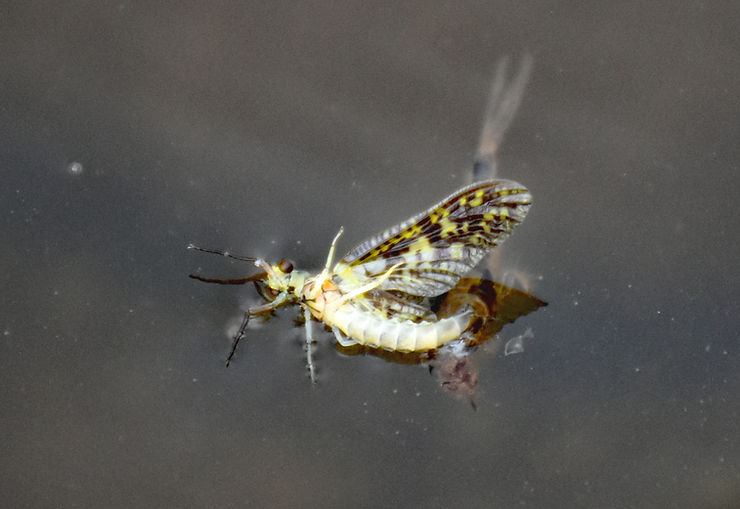
(Photo: Large mayflies such as March Browns or Green Drakes (pictured) can sometimes have trouble emerging from their nymphal shucks and end up trapped in the surface film. These crippled flies are easy targets for hungry trout.)
Matching the Hatch
When using emergers or crippleflies, “close enough” can sometimes be good enough in regards to size of the fly. There’s so much variation among the cripples that trout are far less finicky when feeding on them. Some cripples, for instance, still have the nymphal shuck attached, which makes them appear larger. Other cripples may only be half-developed, caught somewhere between that nymphal or pupal stage and adult.
Usually, if I can match the color fairly close, then I can be off by one size or more and not notice much difference in how trout take the emerger or cripple pattern. As always, the most important factor is achieving a drag-free drift.
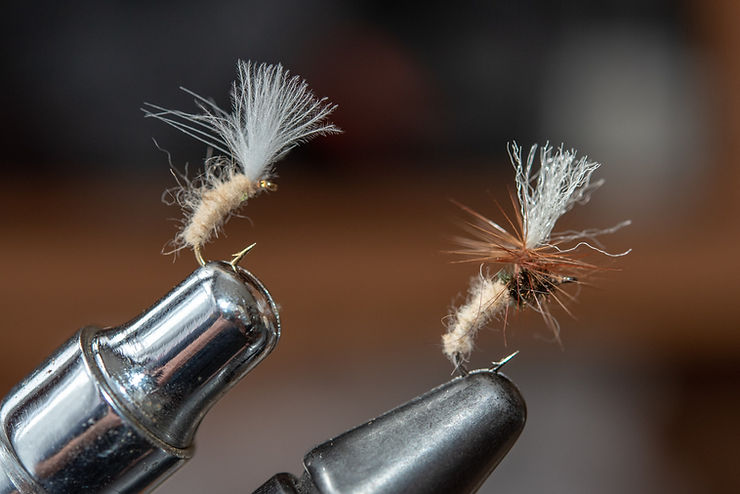
(Photo: The Mole Fly, left, and Klinkhammer, right, are two excellent emerger patterns designed so that the abdomen of each fly pokes down through the water’s surface while the wing remains upright on top. A variety of colors and sizes of these patterns can be used to match almost any hatch.)
How to Fish Them
Emergers are designed to be fished with part of the fly resting below the water’s surface, almost as if the fly were floating at an angle with its tail end pointing downward. Therefore, the trout is really only seeing half of the fly anyway.
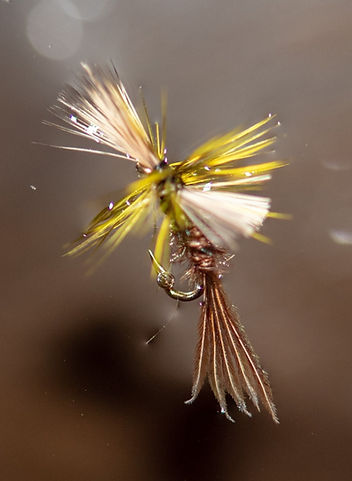
Cripple flies can be fished the same way as emergers, but I also don’t mind if they float completely on the surface as long as they’re riding on their side. This “crippled” profile can trigger strikes like nothing else.
(Note: The pattern pictured here is the size 20 Baetis Emerger Cripple that I did well with on the Little Juniata River. The tail and abdomen of this pattern are the same as a pheasant tail nymph, but the elk hair and hackle imitate a wounded insect trying to break free of its shuck. This is a deadly all-around emerger pattern that has worked well for me just about everywhere I’ve used it.)
Traditional emerger-style cripple flies are more drab and can be almost impossible to see, let alone track as they drift down through the current.
If you don’t have the eyes of a hawk, you can use a dry-dropper combination. I like to use a high-floating, highly visible pattern on top and then run a two-foot section of tippet from the bend of the hook for the emerger. Not only does this make for an effective strike indicator, but you essentially double your chances of catching fish.
Of course, you can also add a beadhead to your emerger pattern and fish it just as you would any nymph under an indicator. Although these flies may be fished close to the bottom, it’s the stage of development that the fly represents that triggers trout to strike.
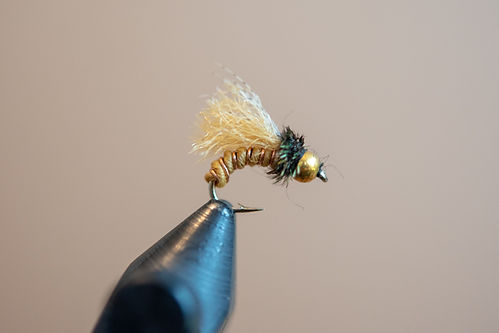
(Photo: Adding a beadhead to an emerger and fishing it as you would any nymph can also be deadly. Sometimes it’s not so much whether you’re fishing near the bottom or on the surface, but the stage the pattern is imitating. In this case, the emerging wings and peacock herl can trigger some vicious strikes.)
I’ve heard many great fishermen say this about even dry flies tied with a trailing nymphal shuck. There’s just something about that shuck that is akin to ringing a dinner bell for trout, perhaps because they perceive the fly as an easy target. I believe this is why patterns like the X-Caddis are so effective. The material used for the trailing shuck is very realistic of an emerging caddis.
Emergers and cripple flies are common occurrences, and trout are always keying on them, even while they’re taking those high-floating adults. Because of how they ride in the surface film, as well as the angle at which they ride (almost vertical), they are more visible to trout and naturally more vulnerable.
You could fish an emerger or cripple fly during even the most ideal mayfly hatches, and regardless of the weather conditions, you’d probably still catch more trout on these patterns than you would on the high-riding adults. For this reason, I never hit the water without a good assortment of emergers and cripple flies in my fly box.
Ralph:I have been ff a VERY long time(50 years +) and after carefully reading a few of your articles I always learn something new..whether its an insight or technique point…..you just get to the point and clearly expressed.Keep the articles coming.Tom Conigliaro
(aka AFISHN on all ff forums)